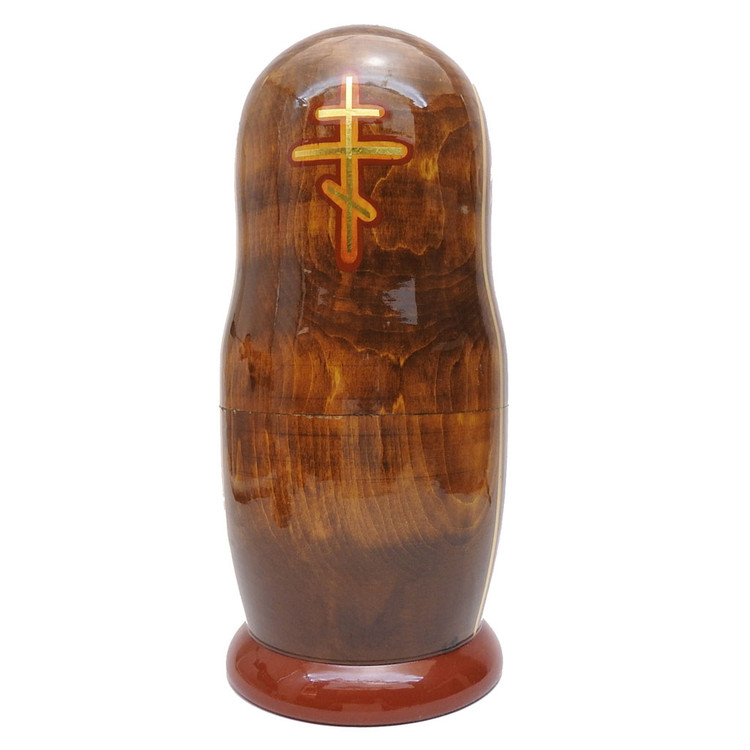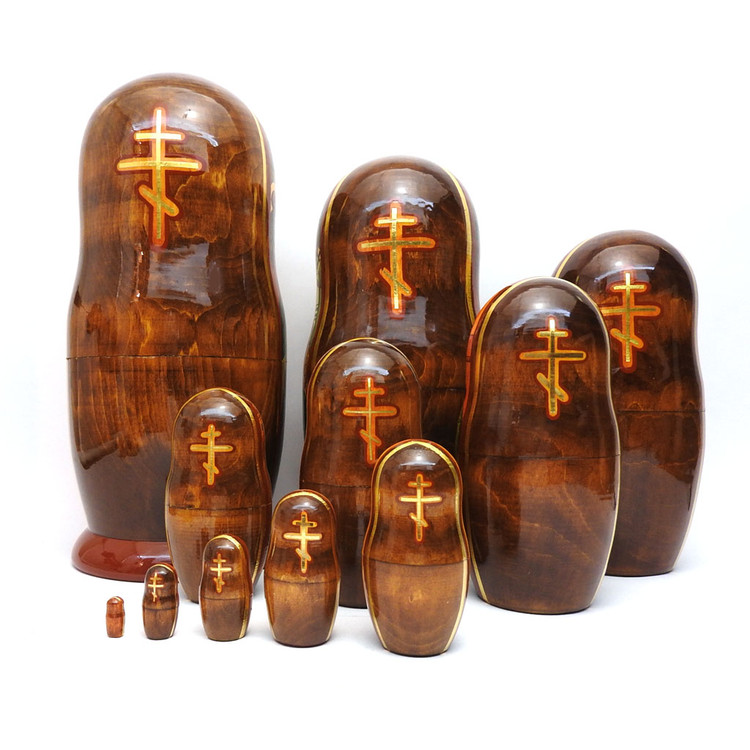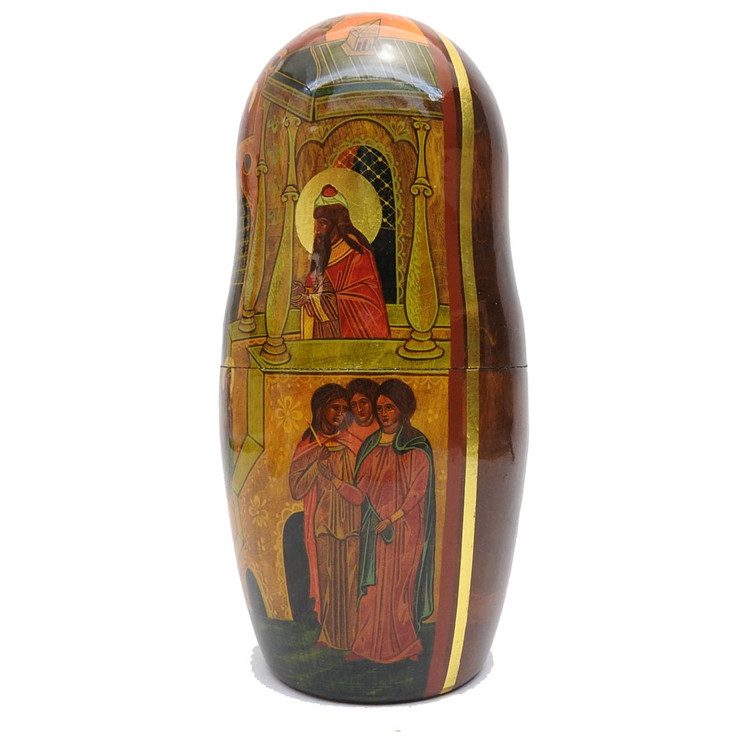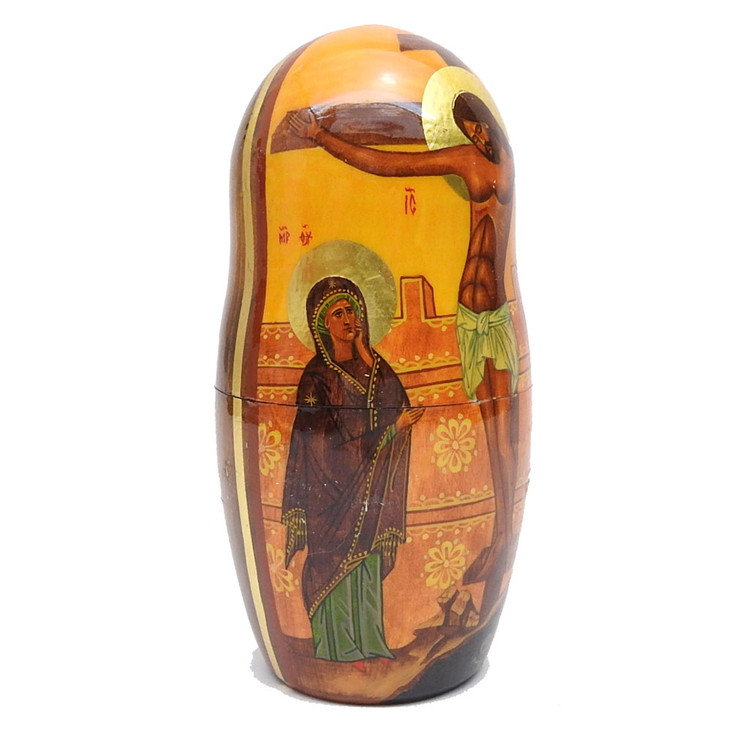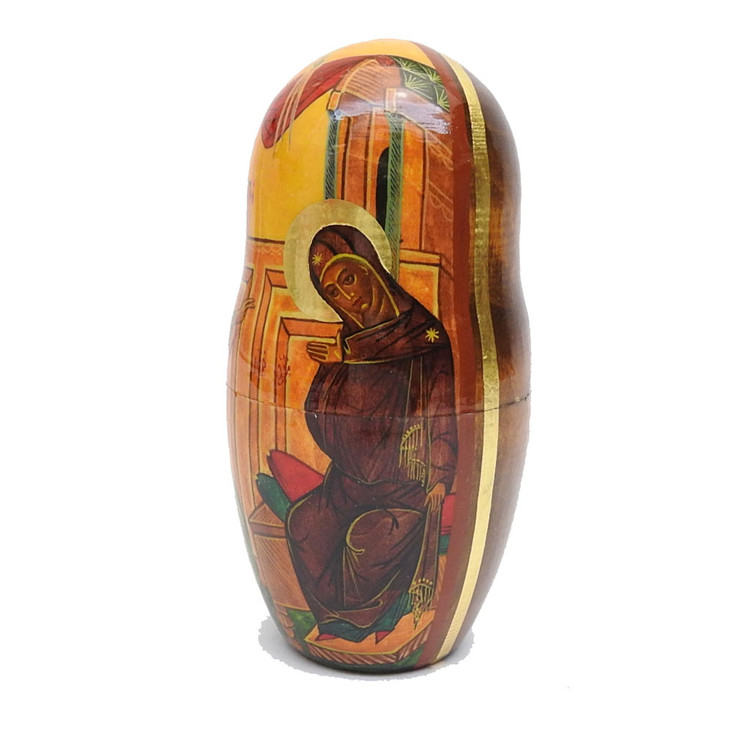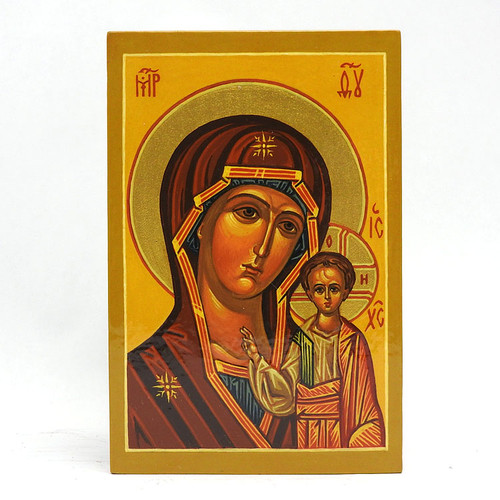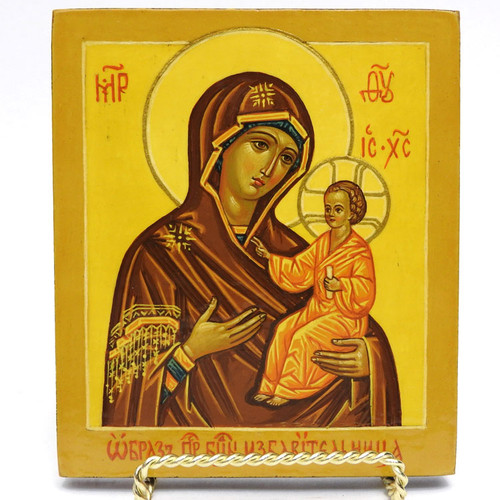Product Description
The Protection (Покров) of the Theotokos. This glorious and elaborate matryoshka depicts one of the most important and significant feast days on the Orthodox calendar, which is commemorated on October 1. It celebrates the appearance of the Mother of God, St. John the Baptist, and several other saints and angels to St. Andrei (Andrew of Constantinople) and his disciple St. Epiphanius. The central image is the Theotokos standing above the faithful with her arms outstretched in prayer and draped with a veil. On either side are angels. On the lower right of most icons of this feast, are saints Andrew and his disciple Epiphanius who saw this vision of the Mother of God, with the twelve apostles, bishops, holy women, monks and martyrs. Below the Theotokos, in the center of the icon, stands a young man with a halo, and clothed in a deacon's sticharion. In his left hand, he is holding an open scroll with the text of the Kontakion for Nativity in honor of the Mother of God. This is St. Romanus the Melodist, the famous hymnographer whose feast is also celebrated on the same day, October 1. He is with his choir attended by the Emperor Leo the Wise together with the Empress and the Patriarch of Constantinople. To the right at the bottom, the Apostle Thomas encounters the newly resurrected Christ. As a side note, one of the world's most renown cathedrals is the Cathedral of Intercession upon a Moat, popularly known as the St. Basil's Cathedral.
The second piece displays the icon of the Dormition of the Mother of God. This feast is celebrated on August 15. As the church year begins on September 1, and the first Great Feast of the year is the Nativity of the Theotokos, the Dormition of the Theotokos the last great feast of the year. The icon is populated with angels and Apostles, including St. Peter and St. Paul. Others included are bishops and women. The bishops are James, the brother of the Lord, Timothy, Heirotheus, and Dionysius the Areopagite, who first recorded the story of the Dormition in the 2nd century AD. The women are Sepphora, Abigail, and Jael, along with other members of the church in Jerusalem.
The Presentation of the Blessed Virgin Mary into the Temple is another important feast. It marks the dedication of the Virgin Mary to God. When she was three year's old, her parents, Joachim and Anna, brought their daughter, dressed in an omophorion, to the temple in Jerusalem, and presented her to Zachariah, the priest, who comes out to meet her, and bows to her. Another important scene at top shows Mary being given food by Archangel Gabriel.
The Assurance of Thomas (Уверение Фомы) occurs on the first Sunday after Easter. Described in John 20:19-31, this feast icon describes the moment eight days after the Resurrection, when Christ secretly amidst His disciples, and behind a closed door. It was His second appearance to the Apostles, yet the young Thomas had not been present first time.
The Crucifixion needs little explanation. Here the depiction includes The Theotokos Mary on the right, who mourns Him outside the walls of Jerusalem and on the site of Adam's skull. To Jesus’ left is John the beloved disciple as a young man, dressed in a mantel and a tunic. His face shows bewilderment, and his hand by his side signifies passive surrender.
The feast of the Annunciation of the Theotokos is celebrated on March 25. It commemorates the announcement of Archangel Gabriel to the Virgin Mary that Christ will enter the world and, through her, become incarnate. In the Bible, it is the first chapter of the gospel of Luke.
The final, smaller pieces, depict, in order: St. John the Baptist, Archangel Michael, an early Orthodox church, a winged seraphim and a lighted candle.
The work on this doll is extraordinary, and was made by two artists in 1994. They placed their names inconspicuously at the bottom of the first doll. All the haloes are gold leaf, and each piece has been meticulously covered with clear lacquer. A gold leaf cross adorns the backs of each and every piece. The set consists of eleven pieces from 12" down to tiny. Everything has been painted or, in the case of the gold leaf, applied. Needless to say, we have one only. Some light wear to openings, otherwise all is near fine.
A note: in Orthodox theology, the Mother of God is the earthly haven in which God was made man, the point in which He, who had eternally been in God, found a temporary form of existence. The Mother of God is the human domain in whom two worlds have met together, the world of the Heavenly and that of the earthly. Another note: the dates mentioned above are the Gregorian calendar dates, and to determine the Julian date, add 14 days.





